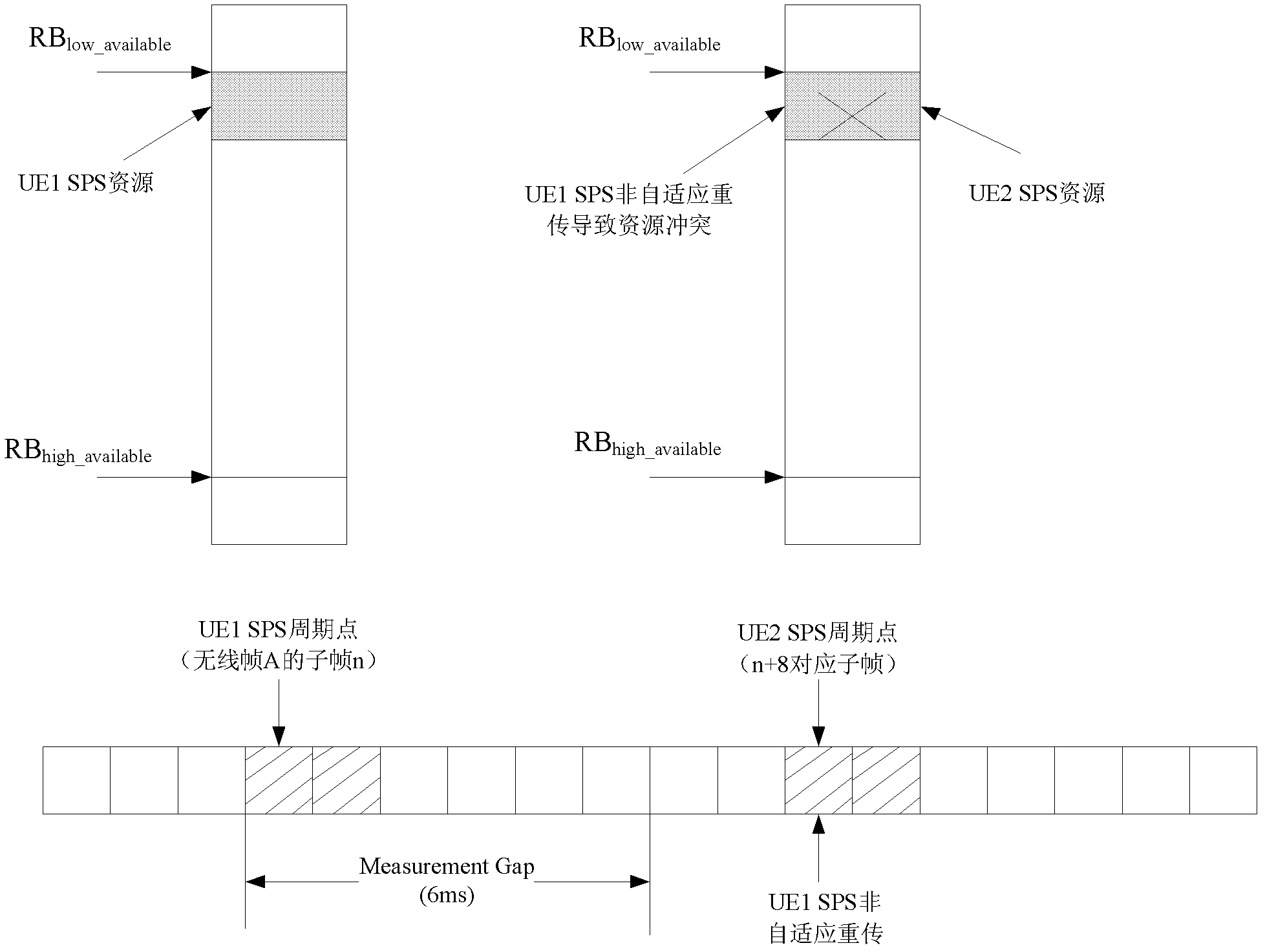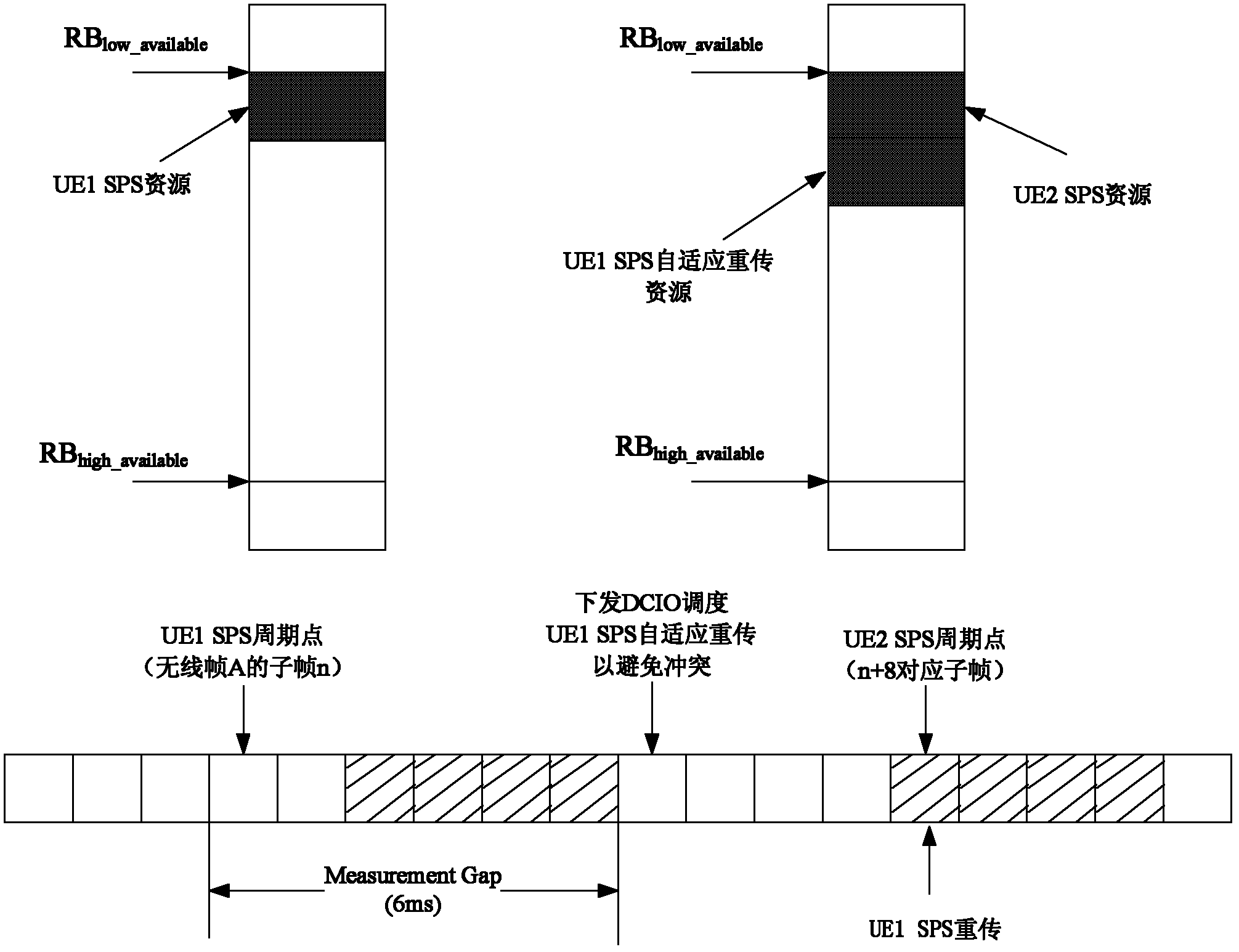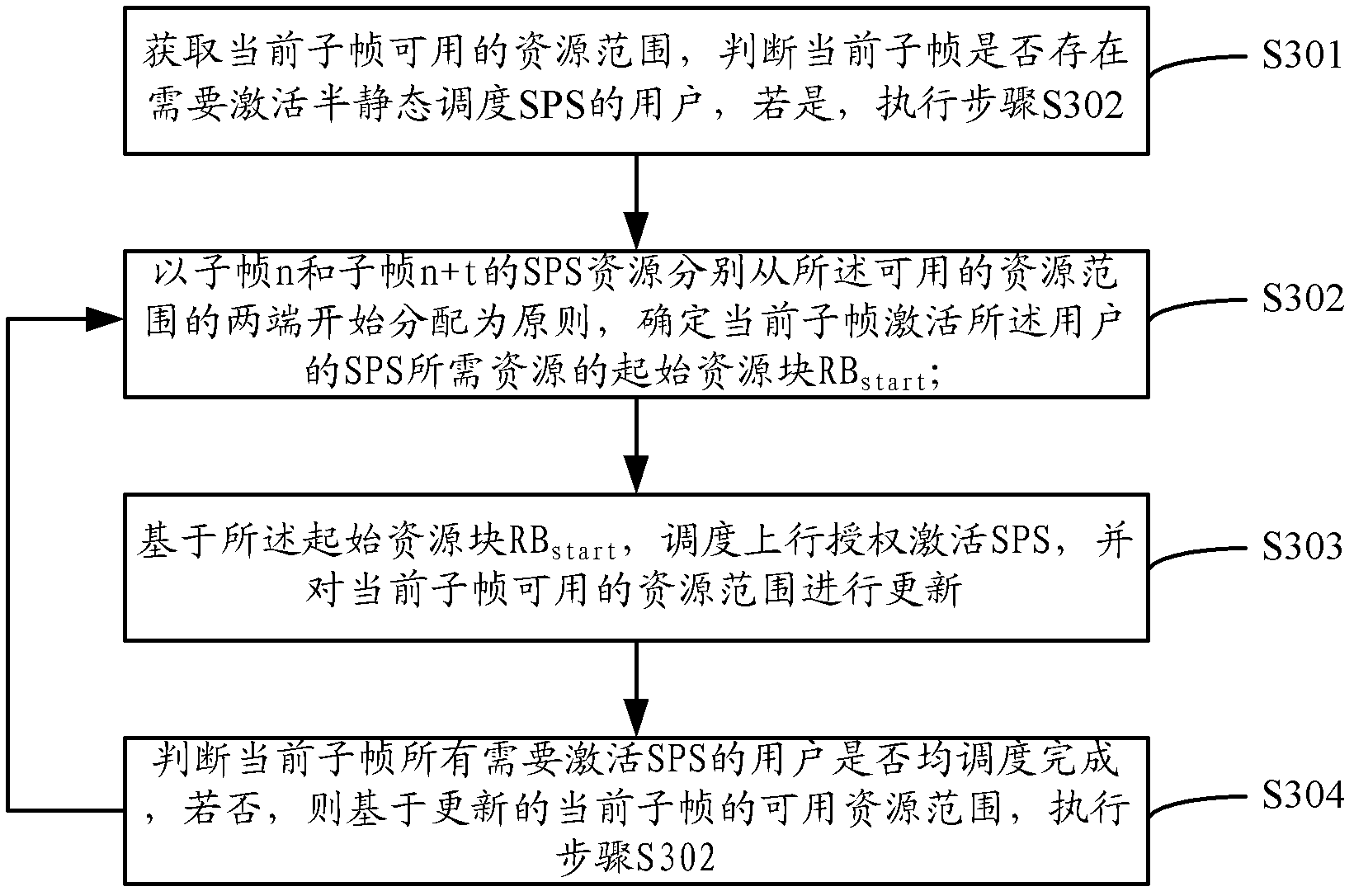Method and device for uplink semi-persistent scheduling resource allocation
A resource allocation device and semi-static scheduling technology, applied in security devices, digital transmission systems, error prevention, etc., can solve problems such as uplink SPS resource conflicts between different UEs, and achieve the effect of avoiding uplink SPS resource conflicts and improving transmission performance
- Summary
- Abstract
- Description
- Claims
- Application Information
AI Technical Summary
Problems solved by technology
Method used
Image
Examples
Embodiment Construction
[0045] The technical solutions in the embodiments of the present invention will be clearly and completely described below in conjunction with the accompanying drawings in the embodiments of the present invention. Obviously, the described embodiments are only a part of the embodiments of the present invention, rather than all the embodiments. Based on the embodiments of the present invention, all other embodiments obtained by those of ordinary skill in the art without creative work shall fall within the protection scope of the present invention.
[0046] The present invention provides an uplink semi-persistent scheduling method and device to solve the technical problem that the uplink SPS resources conflict between different UEs due to the existence of the measurement interval Gap, and improve the probability of successful uplink SPS service demodulation.
[0047] Such as image 3 As shown, the present invention provides an uplink semi-static resource scheduling allocation method, wh...
PUM
 Login to View More
Login to View More Abstract
Description
Claims
Application Information
 Login to View More
Login to View More - R&D
- Intellectual Property
- Life Sciences
- Materials
- Tech Scout
- Unparalleled Data Quality
- Higher Quality Content
- 60% Fewer Hallucinations
Browse by: Latest US Patents, China's latest patents, Technical Efficacy Thesaurus, Application Domain, Technology Topic, Popular Technical Reports.
© 2025 PatSnap. All rights reserved.Legal|Privacy policy|Modern Slavery Act Transparency Statement|Sitemap|About US| Contact US: help@patsnap.com



